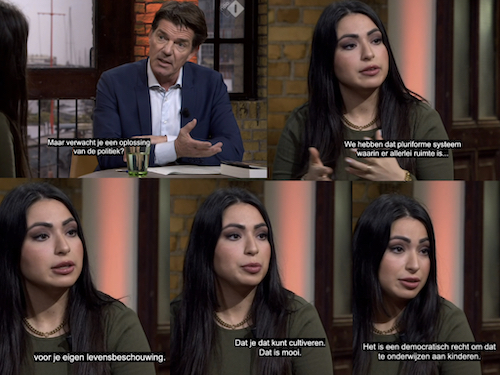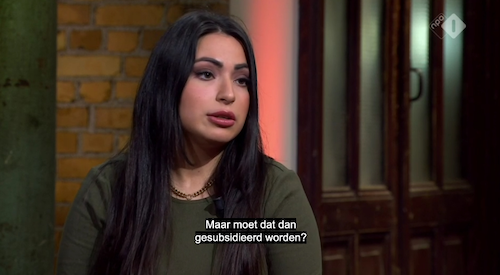Updates
A Ticket System for Government (Or: Let’s Finally Give the Ombudsman Teeth)
The ombudsman, as it stands, is a shark without teeth. It cannot even smell a scandal if it was bleeding before their eyes — can’t sense, can’t bite, can’t act, can’t fix. It’s a watchdog with no jaws. So let’s give it an upgrade or even better give the government such an upgrade that Ombudsman loses the necessity for their entire existence.
This isn’t some grand ideological revolution. It’s just a silly idea for a public ticket system. Silly, but powerful.
Imagine a civic ticket system — not buried in obscure forms, not locked in back-office email chains. Just like an internal help-desk, but for governance. Public, structured, traceable. And smart.
This is what it looks like.
Core Idea
Citizens should be able to report issues publicly — not buried in anonymous inboxes, not hidden behind “ongoing investigation” seals. People already talk about public issues. If people can talk about public issues with their friends, why can’t they track them together too?
A government ticket system could work just like internal systems in IT or customer service — but with a civic twist.
This is not a place for endless debate. It’s a structure to frame problem → proposal → response, cleanly and traceable.
This system proposes a transparent, iterative problem-solving interface where AI is used not to obscure, but to clarify.
The System: Public, AI-Structured, and Transparent
The system is made up of 4 stages — and yes, it uses AI — but only as a tool to help people sharpen what they’re already saying.
Every issue goes through this cycle:
1. Problem Description
a) Citizens submit an issue.
b) The AI cleans up the language, consolidates overlapping inputs, and upgrades the coherence of the report.
c) A public change-log shows the input that evolved the description — all steps visible, all input attributable.
2. Proposed Solution
a) Based on the refined problem description, the AI drafts a solution or possible action path.
b) This is visible to the public as a formal response — no magic, just structured reasoning.
c) This is not a decision. It’s a draft — structured logic, not authority. Only advice.
3. Critique Layer
a) Citizens respond to the proposed solution — a structured challenge to the proposal..
b) Their remarks are also structured by AI — not censored, but upgraded for clarity and grouped by theme or angle.
c) Again, change-logs and input trails are visible. No anonymous edits. No hidden manipulations.
d) in a sense this is the same as step 1 (problem description)
4. Upgraded Solution
a) The AI integrates valid critiques and proposes a refined version of the solution.
b) This is the “feedback-reinforced” stage, where the system attempts synthesis, not endless argument loops.
All stages remain visible — including abandoned tickets, failed resolutions, and ongoing ones. This creates a living public record of issues and proposed governance responses.
This is the synthesis. 1 = 2 + 3 = 4.
Why This Matters
- It forces clarity and traceability. No more vague complaints floating in chaos.
- It turns public input into a collaborative upgrade process.
- It shows which tickets are being handled, stalled, ignored — in plain sight.
- It makes every AI edit accountable, not mysterious.
- It doesn’t replace the ombudsman — it arms them.
Business Model? Sure — But Keep It Public
Yes, this is a product. But no, it shouldn’t be commercialized. This is civic infrastructure. It belongs to the commons.
It could be sold to municipalities, NGOs, or transparency coalitions — but that defeats the purpose.
Build it, release it, and let it run at zero cost. The public has already paid for enough systems that don’t work. This one should.
The value lies not in monetization — but in legitimacy.
Expanded Use: From Complaint Board to Administrative Operating System
What starts as a feedback tool can evolve into a complete civic engine. The system can scale:
- Reported Issue
- Processed Issue (by a public servant or automated filter)
- AI-generated remark on process adequacy (4-stages again)
- Re-open option if resolution was insufficient (4-stages again)
- Cross-department visibility and workflow mapping
- The ticket can go through different departments and the work of each department remains visible.
Each issue flows like a case file, but it’s public-facing and structurally transparent. Departments can adopt the system internally. Citizens and officials see the same state of the case. Updates are traceable.
With enough refinement, this system could even approach pre-judicial arbitration or replace lower-level administrative courts — especially for predictable, repeatable types of disputes (benefits, housing, permit denials, etc.).
At some point a judge and lawyer can then bend over the case after it went through these 3 steps.
Design Philosophy
- Public by default.
- AI-enhanced, not AI-obscured.
- Built around iteration, not resolution-hiding.
- Input is traceable. Reasoning is legible. Logic is public.
- Not built to silence citizens with forms — but to cohere chaos into clarity.
Potential Impact:
If deployed at scale, this would:
- Reduce performative complaint culture (“I ranted online!”) in favor of traceable input.
- Provide oversight journalists and watchdogs with live case data.
- Offer civil servants a way to separate noise from signal.
- Create longitudinal accountability: we’d know what failed, what improved, and why.
- We can track government efficiency through details such as backlog and amount of re-opened cases
Final Thought
Let’s stop treating public concern like noise.
Let’s give it a ticket.
Let’s give the ombudsman jaws.
Give people a way to speak clearly. Let the problems stay visible. Let the fixes be criticized. Let the system evolve in full view.
Democracy doesn’t die in darkness — it suffocates in forms. We’ve normalized arbitrary bureaucracy and opaque complaint systems. But the technology to upgrade them exists. All we’re missing is the will — and the will can be crowd-sourced.
Written by Artorius Magnus
https://tinyurl.com/laconic-utopia World-Peace suggestions @250 articles highschool dropout-autodidact (unofficially 5+ PhD's).
Nog niet genoeg.
Komop mensen de Non-Food heeft ons echt nodig....... teken de petitie .
Laatste nieuws: zie Hoe ver staan we
Laatste nieuws: zie Hoe ver staan we nu.
Seminariemuur behoud petitie in het AD maart 2021
Driebergenaar Wouter van Berkum is een petitie gestart voor het behoud van de historische seminariemuur. Deze muur, die de achtertuinen van de meeste bewoners van de Bosstraat begrenst, is (...) lees verder.
Oproep om erkenning, gecoördineerd onderzoek en behandeling langdurige covid
De petitionaris van de petitie Oproep om erkenning, gecoördineerd onderzoek en behandeling langdurige covid vraagt u de petitie te ondertekenen:
"Uit onderzoek blijkt dat ruim 10% van alle mensen die een COVID-19 besmetting oplopen hier langdurige klachten aan overhouden. Dit met vaak invaliderende, levensontwrichtende gevolgen voor hun werkzame, sociale en voorheen sportieve leven.
Graag vragen wij jouw steun. Met jou bedoelen wij de PASC patient, hun naasten (vrienden, familie en collegae) en verder iedereen die dit initiatief een warm hart toedraagt.
PASC staat voor 'post-acute sequelae of SARS-CoV-2 infection'. Symptomen behelzen o.a. extreme vermoeidheid, geheugen- en concentratieproblemen, kortademigheid, spier- en gewrichtspijnen, druk op de borst, hoofdpijnen, maag- en darmproblemen, hartkloppingen en slapeloosheid. Geschat wordt dat er momenteel zo'n 100.000 PASC patiënten in Nederland zijn.
In de VS maakt het NIH (the National Institutes of Health) de komende 4 jaar 1,1 miljard dollar vrij voor onderzoek naar PASC. In het VK investeert NICE (the National Institute for Health and Care Excellence) in de opzet van 81 klinieken speciaal voor PASC-patiënten plus onderzoek met een budget van 18,5 miljoen pond.
Teken jij ook, zodat we een duidelijk signaal kunnen geven met het verzoek om meer erkenning, gecoördineerd onderzoek en een betere behandeling van PASC?"
Wilt u deze of een andere petitie ook aandacht geven hier?
Sluitingsdagen 2 weken verlengd
Het is nog tot 15 april 2021 mogelijk om de petitie te tekenen tegen de sloop van de Christelijke Opleidingsschool in Katwijk. De termijn die aanvankelijk liep tot 30 maart is met twee weken verlengd.
Artikel in Groot Voorschoten van 26 maart 2021
Lale Gül bij Buitenhof: "moet het gesubsidieerd worden?"
Maar verwacht je een oplossing van de politiek?
Lale Gül: "We hebben dat pluriforme systeem waarin er allerlei ruimte is voor je eigen levensbeschouwing. Dat je dat kunt cultiveren.
Dat is mooi. Het is een democratisch recht om dat te onderwijzen aan kinderen.
Maar moet dat dan gesubsidieerd worden?"
Buitenhof, 28 maart 2021, vanaf 38'15


De Telegraaf: Moet religieus onderwijs worden afgeschaft?
Religieuze scholen komen in Nederland regelmatig in opspraak. Zo onderstond er gisteren commotie over een Reformatorische scholengemeenschap in Gorinchem na (...) lees verder
En er is ook een discussie over bij De Telegraaf op Facebook.